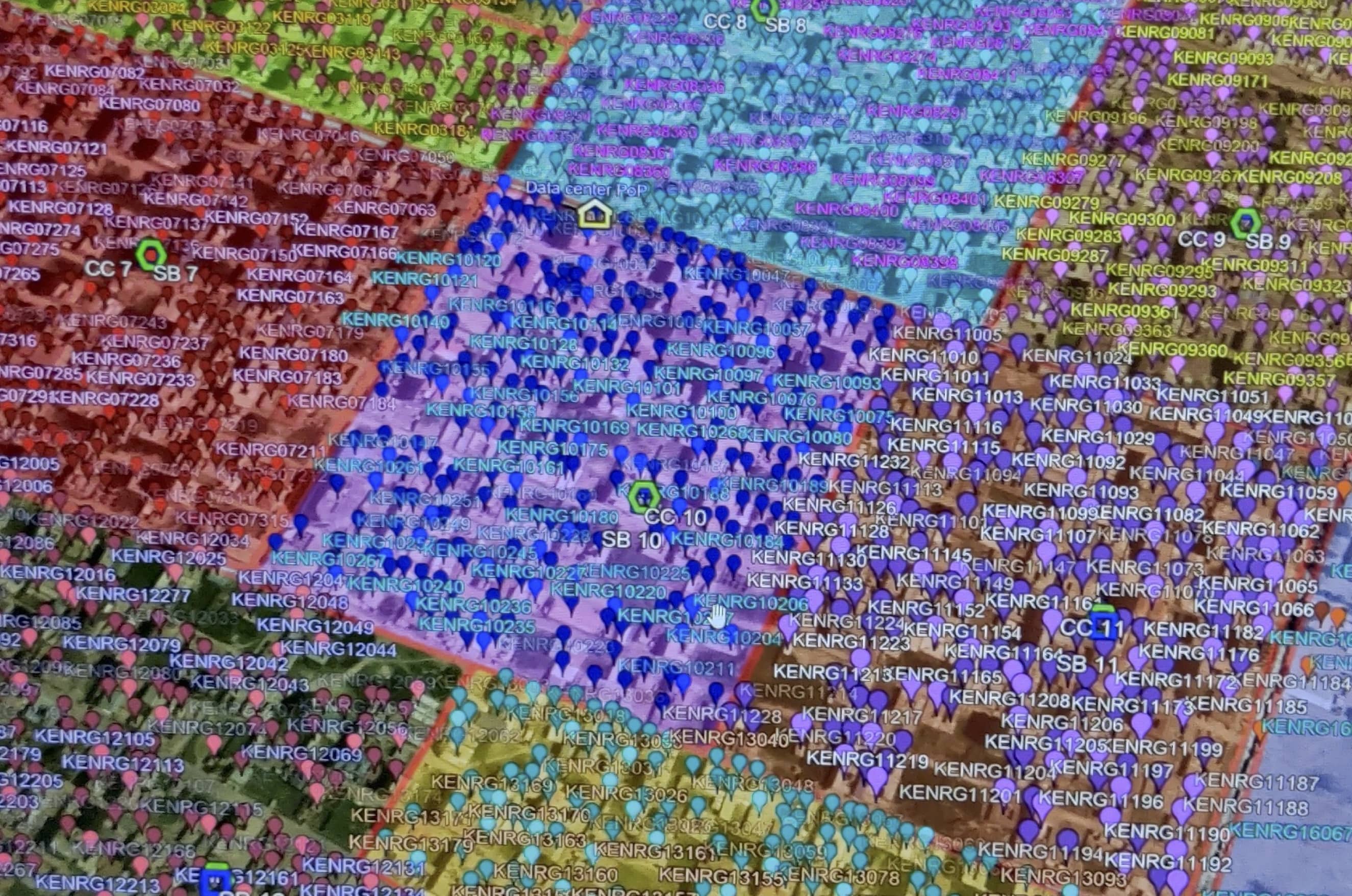
www.buildingsandcities.org/insights/commentaries/disruptive-technologies-regulators.html
Disruptive Technologies and the Regulator's Dilemma

Why regulatory interfaces should be re-opened and re-experimentalised to produce more socially just data-driven cities.
Andrea
Pollio
(Polytechnic of Turin and University of Cape Town) comments on a paper in the Buildings
& Cities special issue
Data Politics in the Built Environment: 'Disruptive data: historicising the
platformisation of Dublin's taxi industry'. This commentary considers the broader
political economy logics that underlie the datafication of cities. There is an
important (often missing) role for the state to have an active role in creating
planning, regulation and state entrepreneurialism in relation to the private
sector.
A 1995 Harvard Business Review paper has indelibly marked how we speak about technology and innovation today. In the piece, Bower & Christensen (1995) introduced the notion of 'disruptive technologies' and 'disruptive innovation' to describe technical advancements that established market leaders had failed to see. One of the examples the authors marshalled was that of micro-computers. Focused as mainframe manufacturers were on providing good quality, increasingly powerful machines to governments and large corporations (sustaining technologies), they had missed the opportunity of selling cheaper, poorer-quality machines like personal computers (disruptive technologies) to a market that did not exist yet but was about to bloom. Ironically, as Christensen went on to explain in The Innovator's Dilemma, company executives were acting by the book (1997). But when it comes to disruption, "doing the right thing is the wrong thing" (Chua 2018). Ultimately, Christensen argues, disruptive technologies make market leaders obsolete, prone to be replaced by incumbents that are more agile.
'To disrupt or be disrupted' has, in this sense, turned into the ubiquitous theory of technological change of our time. As Lepore (2014) has noted: every historical epoch needs an explanation for how change happens, for why certain things fail and others thrive, a theory 'of bloom and wilt'. Murky as it is, disruption theory has become exactly that: a diagnosis for the recent past and a predictive mantra for the future to come. Or more. Stiegler (2019), for example, has argued that disruption is not just an explanation of change, but the very historical moment in which we are immersed, the perpetual acceleration of technological shifts. And while Stiegler is critical of this conjuncture, many Silicon Valley evangelists have made 'disruption' the newspeak of technical triumph and business success.
In fact, 'disruptive' tech founders like Travis Kalanick (Uber), Mark Zuckerberg (Meta), Sam Altman (Open AI), and others belong to a longer genealogy of technological optimism and libertarian creed. Barbrook & Cameron (1996) famously described it as the 'Californian Ideology': a promethean faith in the emancipatory power of technological change, a belief that 'promiscuously combine[d] the free-wheeling spirit of the hippies and the entrepreneurial zeal of the yuppies'. This Californian ideology is not a singular view, yet something extremely powerful emanates from this Silicon Valley-inspired, high-tech, laissez-faire thought collective. This is the double-notion that disruption is inevitably positive, as it optimises broken, malfunctioning, slow-moving systems of value generation (Pollio 2022); and that disruption is only possible if the state steps away, removing regulations and red tape. Obviously, this is based on a wilful historical misconception, as Mazzucato (2011) argues, charting the role of state-driven innovations is the very making of Silicon Valley capitalism. Yet the oppositional nature of disruption and bureaucracy is still powerful, even in a lot of critical scholarship on digital platforms (see Zhang & Chen 2022 making a point about China being considered an outlier).
For these reasons, White & Larsson's (2023) paper in this special issue is a welcome contribution to a body of scholarly work that has underscored the importance of state planning, state regulation, and state entrepreneurialism in the making of platformisation (Zhang & Chen 2022; Cirolia et al. 2023; Rolf & Schindler 2023), even when these processes are imagined to operate in a stateless vacuum. With the concept of 'disruptive data', the two authors reframe the operations of e-hailing platforms for taxi services as strategies for capitalising on uncertainty, under a broader political economy whose boundaries and rules are indeed defined by state regulators. In doing so, White & Larsson's take on the bigger question of this special issue, regarding how data are generated, metabolised and monetised in the built environment. Their paper speaks to the fact that digital disruption is always made in context, and it does not simply 'happen'. Even Christensen's (1997) understanding of 'disruptive technologies' is almost constructivist: innovations that succeed are not just good at replacing existing technologies, but at co-opting their entire value network.
This 'networked' view of disruption, which also emerges from how White and Larsson narrate the trajectory of Uber and Hailo in reformatting Dublin's taxi industry, offers a useful way to think about platformisation. Not a finished process, platform expansion is constantly adjusted, negotiated and contingent upon changing circumstances, including those that may or may not determine whether digital technologies are predatory or inclusive. In turn, if platformisation is a tentative, temporary project, then it is fundamental to outline the moments when regulations could be or have been designed otherwise, when more democratic regulatory nudges could produce more socially just data-driven cities. After all, even state absence is a deliberate stance that creates the conditions for companies like Uber to fill the gaps of austerity-broken cities (Wells et al. 2023). In some cases, e.g. African cities, platforms find a fertile terrain because colonial and postcolonial projects of city-building too left cities with fragmented infrastructure systems that can be mended through the promise of algorithmic optimization (Pollio et al. 2023).
This special issue, especially White and Larsson (2023) , attest to the imperative of understanding the kinds of regulatory interfaces that exist between states, subnational authorities, and the private technology sector in the production of disruptive, data-driven urban change. To understand and perhaps harness that change, our gaze should shift away from an exclusive focus on Big Tech to study how regulatory interfaces become experimental sites where the 'value networks' of disruptive technologies are defined and contextualised (Callon 2021). For example, in our research in East Africa, we are documenting the emergence of regulatory sandboxes which control the diffusion of financial innovations in a context where existing frameworks are obsolete or incapable of putting a yoke on predatory credit practices. Similarly, the European Union has deployed various sandboxes, from Blockchain to AI, to modulate the spread of these disruptions. Ex-post attempts at regulation are often moot. Entering the mechanics of these sandboxes as researchers is not easy, and it requires an explicit propositional stance (Baptista and Cirolia 2022), a steep climb that is ahead of urban scholars of platforms and datafied economies everywhere.
References
Baptista, I., & Cirolia, L. R. (2022). From problematisation to propositionality: Advancing southern urban infrastructure debates. Transactions of the Institute of British Geographers, 47(4), 927-939.
Barbrook, R., & Cameron, A. (1996). The californian ideology. Science as culture, 6(1), 44-72.
Bower, J. L., & Christensen, C. M. (1995). Disruptive technologies: catching the wave. Harvard Business Review, January-February, 43-53.
Callon, M. (2021). Markets in the making: Rethinking competition, goods, and innovation. Princeton University Press.
Christensen, C.M. (1997). The Innovator's Dilemma: When New Technologies Cause Great Firms to Fail. Harvard Business Review Press.
Chua, C. (2018). Innovation, entrepreneurship, and the spirit of digital capitalism.CLCWeb: Comparative Literature and Culture, 20(6), 2-10.
Cirolia, L. R., Sitas, R., Pollio, A., Sebarenzi, A. G., & Guma, P. K. (2023). Silicon Savannahs and motorcycle taxis: A Southern perspective on the frontiers of platform urbanism. Environment and Planning A: Economy and Space, 0308518X231170193.
Lepore, J. (2014, June 23). The disruption machine. What the gospel of innovation gets wrong. The New Yorker.
Mazzucato, M. (2011). The entrepreneurial state. London: Anthem Press.
Pollio, A. (2022). Acceleration, development and technocapitalism at the Silicon Cape of Africa. Economy and Society, 51(1), 46-70.
Pollio, A., Cirolia, L. R., & Ong'iro Odeo, J. (2023). Algorithmic Suturing: Platforms, Motorcycles and the 'Last Mile' in Urban Africa. International Journal of Urban and Regional Research, 47(6), 957-974.
Rolf, S., & Schindler, S. (2023). The US-China rivalry and the emergence of state platform capitalism. Environment and Planning A: Economy and Space, 0308518X221146545.
Stiegler B (2019) The Age of Disruption: Technology and Madness in Computational Capitalism (trans. Ross D). Cambridge: Polity.
Wells, K. J., Attoh, K., & Cullen, D. (2023). Disrupting DC: The Rise of Uber and the Fall of the City. Princeton University Press.
White, J. & Larsson, S. (2023). Disruptive data: historicising the platformisation of Dublin's taxi industry. Buildings and Cities, 4(1), p.838-850. https://doi.org/10.5334/bc.293
Zhang, L., & Chen, J. Y. (2022). A regional and historical approach to platform capitalism: The cases of Alibaba and Tencent. Media, Culture & Society, 44(8), 1454-1472.
Latest Peer-Reviewed Journal Content
A framework for 1.5°C-aligned GHG budgets in architecture
G Betti, I Spaar, D Bachmann, A Jerosch-Herold, E Kühner, R Yang, K Avhad & S Sinning
Net zero retrofit of the building stock [editorial]
D Godoy-Shimizu & P Steadman
Co-learning in living labs: nurturing civic agency and resilience
A Belfield
The importance of multi-roles and code-switching in living labs
H Noller & A Tarik
Researchers’ shifting roles in living labs for knowledge co-production
C-C Dobre & G Faldi
Increasing civic resilience in urban living labs: city authorities’ roles
E Alatalo, M Laine & M Kyrönviita
Co-curation as civic practice in community engagement
Z Li, M Sunikka-Blank, R Purohit & F Samuel
Preserving buildings: emission reductions from circular economy strategies in Austria
N Alaux, V Kulmer, J Vogel & A Passer
Urban living labs: relationality between institutions and local circularity
P Palo, M Adelfio, J Lundin & E Brandão
Living labs: epistemic modelling, temporariness and land value
J Clossick, T Khonsari & U Steven
Co-creating interventions to prevent mosquito-borne disease transmission in hospitals
O Sloan Wood, E Lupenza, D M Agnello, J B Knudsen, M Msellem, K L Schiøler & F Saleh
Circularity at the neighbourhood scale: co-creative living lab lessons
J Honsa, A Versele, T Van de Kerckhove & C Piccardo
Positive energy districts and energy communities: how living labs create value
E Malakhatka, O Shafqat, A Sandoff & L Thuvander
Built environment governance and professionalism: the end of laissez-faire (again)
S Foxell
Co-creating justice in housing energy transitions through energy living labs
D Ricci, C Leiwakabessy, S van Wieringen, P de Koning & T Konstantinou
HVAC characterisation of existing Canadian buildings for decarbonisation retrofit identification
J Adebisi & J J McArthur
Simulation and the building performance gap [editorial]
M Donn
Developing criteria for effective building-sector commitments in nationally determined contributions
P Graham, K McFarlane & M Taheri
Reimagining circularity: actions for optimising the use of existing buildings
R Lundgren, R Kyrö, S Toivonen & L Tähtinen
Effective interdisciplinary stakeholder engagement in net zero building design
S Vakeva-Baird, F Tahmasebi, JJ Williams & D Mumovic
Metrics for building component disassembly potential: a practical framework
H Järvelä, A Lehto, T Pirilä & M Kuittinen
The unfitness of dwellings: why spatial and conceptual boundaries matter
E Nisonen, D Milián Bernal & S Pelsmakers
Environmental variables and air quality: implications for planning and public health
H Itzhak-Ben-Shalom, T Saroglou, V Multanen, A Vanunu, A Karnieli, D Katoshevski, N Davidovitch & I A Meir
Exploring diverse drivers behind hybrid heating solutions
S Kilpeläinen, S Pelsmakers, R Castaño-Rosa & M-S Miettinen
Urban rooms and the expanded ecology of urban living labs
E Akbil & C Butterworth
Living with extreme heat: perceptions and experiences
L King & C Demski
A systemic decision-making model for energy retrofits
C Schünemann, M Dshemuchadse & S Scherbaum
Modelling site-specific outdoor temperature for buildings in urban environments
K Cebrat, J Narożny, M Baborska-Narożny & M Smektała
Understanding shading through home-use experience, measurement and modelling
M Baborska-Narożny, K Bandurski, & M Grudzińska
Building performance simulation for sensemaking in architectural pedagogy
M Bohm
Beyond the building: governance challenges in social housing retrofit
H Charles
Heat stress in social housing districts: tree cover–built form interaction
C Lopez-Ordoñez, E Garcia-Nevado, H Coch & M Morganti
An observational analysis of shade-related pedestrian activity
M Levenson, D Pearlmutter & O Aleksandrowicz
Learning to sail a building: a people-first approach to retrofit
B Bordass, R Pender, K Steele & A Graham
Market transformations: gas conversion as a blueprint for net zero retrofit
A Gillich
Resistance against zero-emission neighbourhood infrastructuring: key lessons from Norway
T Berker & R Woods
Megatrends and weak signals shaping future real estate
S Toivonen
A strategic niche management framework to scale deep energy retrofits
T H King & M Jemtrud
Generative AI: reconfiguring supervision and doctoral research
P Boyd & D Harding
Exploring interactions between shading and view using visual difference prediction
S Wasilewski & M Andersen
How urban green infrastructure contributes to carbon neutrality [briefing note]
R Hautamäki, L Kulmala, M Ariluoma & L Järvi
Implementing and operating net zero buildings in South Africa
R Terblanche, C May & J Steward
Quantifying inter-dwelling air exchanges during fan pressurisation tests
D Glew, F Thomas, D Miles-Shenton & J Parker
Western Asian and Northern African residential building stocks: archetype analysis
S Akin, A Eghbali, C Nwagwu & E Hertwich
Join Our Community

The most important part of any journal is our people – readers, authors, reviewers, editorial board members and editors. You are cordially invited to join our community by joining our mailing list. We send out occasional emails about the journal – calls for papers, special issues, events and more.
We will not share your email with third parties. Read more



Latest Commentaries
COP30 Report
Matti Kuittinen (Aalto University) reflects on his experience of attending the 2025 UN Conference of the Parties in Belém, Brazil. The roadmaps and commitments failed to deliver the objectives of the 2025 Paris Agreement. However, 2 countries - Japan and Senegal - announced they are creating roadmaps to decarbonise their buildings. An international group of government ministers put housing on the agenda - specifying the need for reduced carbon and energy use along with affordability, quality and climate resilience.
Building-Related Research: New Context, New Challenges
Raymond J. Cole (University of British Columbia) reflects on the key challenges raised in the 34 commissioned essays for Buildings & Cities 5th anniversary. Not only are key research issues identified, but the consequences of changing contexts for conducting research and tailoring its influence on society are highlighted as key areas of action.